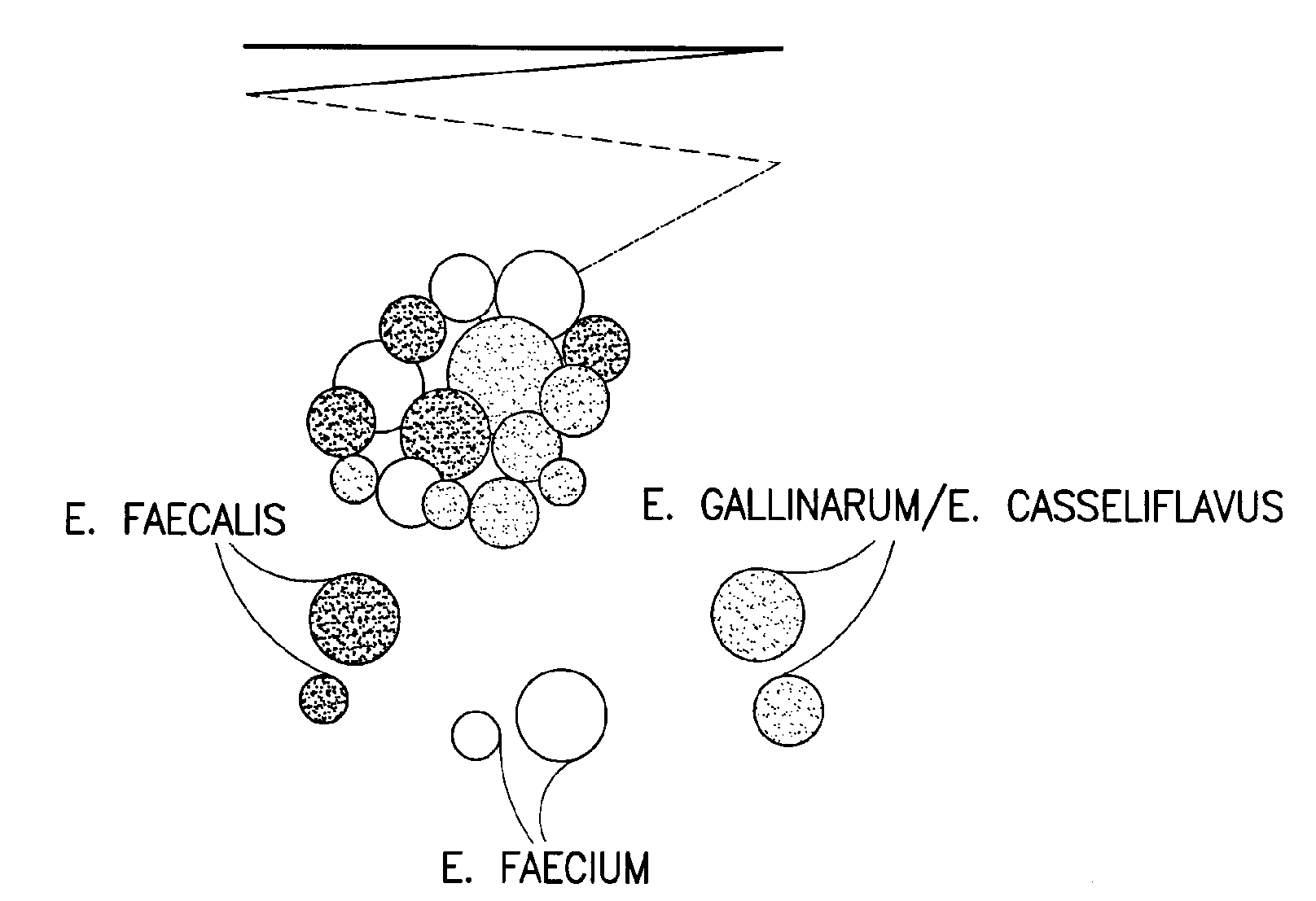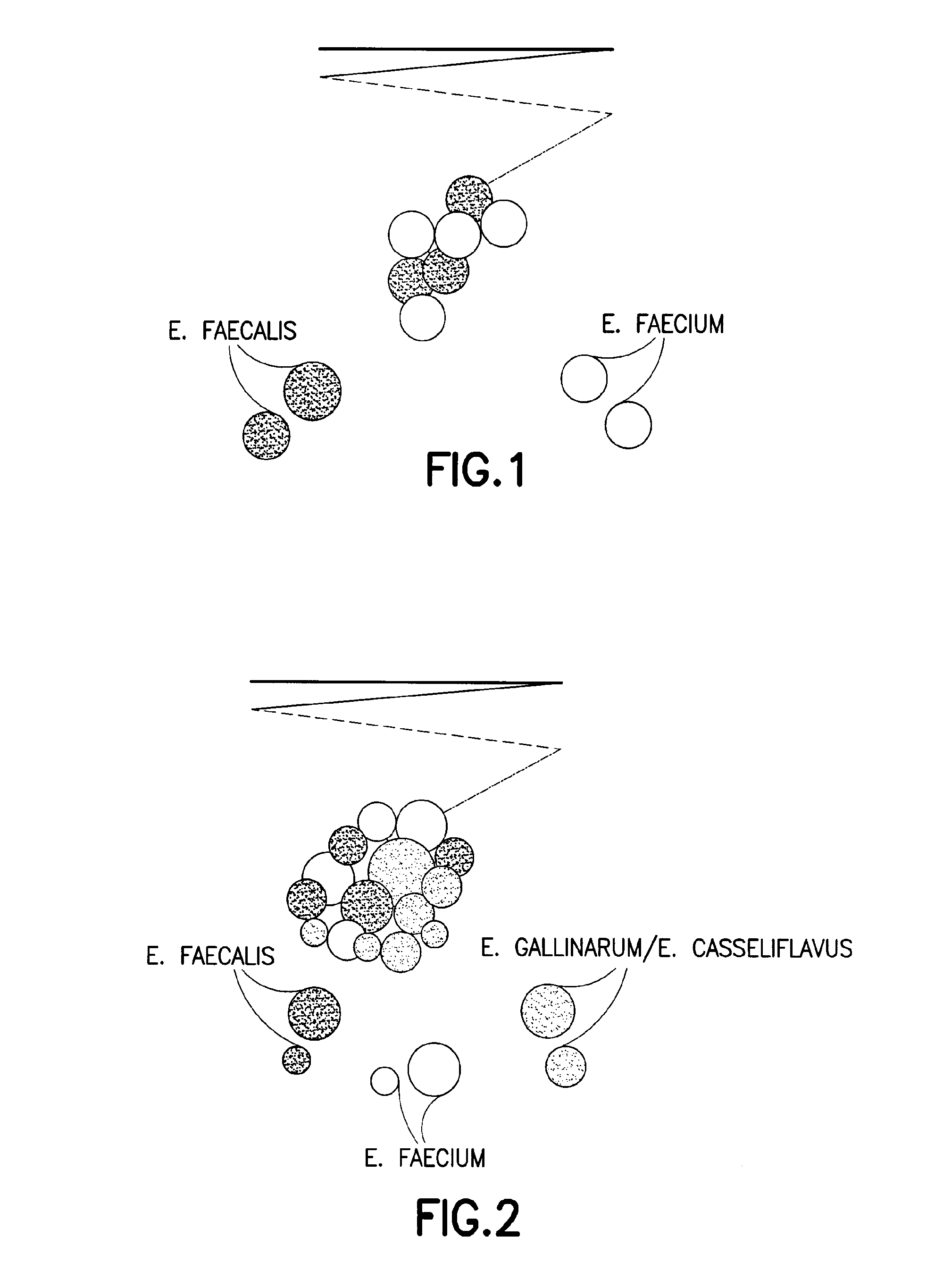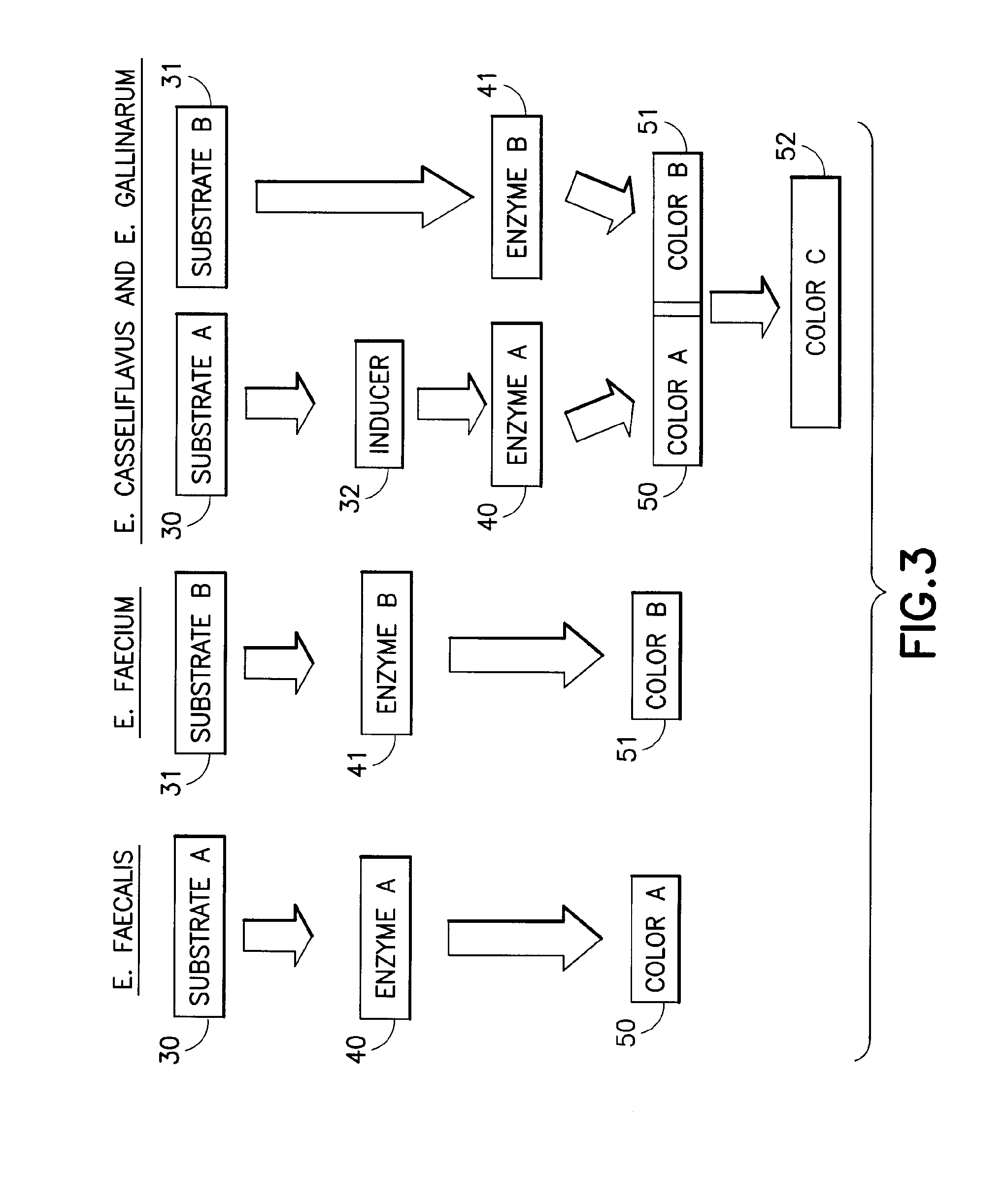Chromogenic medium for the detection and identification of vancomycin resistant enterococci and method therefor
a vancomycin resistant and chromogenic technology, applied in the field of chromogenic medium for the detection and identification of vancomycin resistant enterococci and the method therefor, can solve the problems of increasing mortality, vre detection in the healthcare setting is a major challenge, and the association of vre is not clear, so as to facilitate the direct identification and differentiation
- Summary
- Abstract
- Description
- Claims
- Application Information
AI Technical Summary
Benefits of technology
Problems solved by technology
Method used
Image
Examples
example 1
Vancomycin Titration and Addition with Cefoxitin
[0068]Media was prepared to evaluate the effect of increasing vancomycin concentration on the sensitivity of the vanA, vanB (i.e. E. faecium and E. faecalis), and vanC (i.e. E. casseliflavus / E. gallinarum) containing species of enterococci. Isolates of the target organisms of interest (E. faecium, E. faecalis, E. casseliflavus and E. gallinarum) were obtained. A suspension was prepared for each isolate that was equivalent to a McFarland 0.5 (108). The suspensions were diluted according to the guidelines in the Clinical Laboratory Standards Institute (CLSI) M22-A3 document.
[0069]Media as described in Table 3 below were prepared. A standard streak plate method for inoculation was used for sample isolation. Each isolate was inoculated onto each media formulation. The plates were then incubated in ambient air (35° C.) and observed after 24 hours of incubation.
TABLE 3Amount (g)ComponentABCDEFGHA. Supportingthe growth of VREcasein peptone303...
example 2
Vancomycin-Cephalosporin Synergy Testing
[0072]In order to better understand the effect of cefoxitin on the vanC isolates, media having different cephalosporins with and without vancomycin were evaluated. The cephalosporins tested represented each of the four generations: cephalothin (1st gen.), cefoxitin (2nd gen.), cefotaxime (3rd gen.), and cefipime (4th gen.). Media containing penicillin with and without vancomycin were also evaluated.
[0073]The formulations for the evaluated media are presented in Table 4 below. Isolates of interest (primarily vanA, vanB, and vanC containing enterococci) were obtained. Each isolate was inoculated onto each media formulation. The plates were then incubated in ambient air (35° C.) and observed after 24 hours of incubation.
TABLE 4Amounts (g / L)Components1234567891011casein3030303030303030303030peptoneBHI55555555555meat peptone1010101010101010101010Yeast22222222222Extractsoy peptone66666666666Sexetam Agar13.513.513.513.513.513.513.513.513.513.513.5Sol...
PUM
| Property | Measurement | Unit |
|---|---|---|
| resistance | aaaaa | aaaaa |
| transferable resistance | aaaaa | aaaaa |
| minimum inhibitory concentrations | aaaaa | aaaaa |
Abstract
Description
Claims
Application Information
 Login to View More
Login to View More - R&D
- Intellectual Property
- Life Sciences
- Materials
- Tech Scout
- Unparalleled Data Quality
- Higher Quality Content
- 60% Fewer Hallucinations
Browse by: Latest US Patents, China's latest patents, Technical Efficacy Thesaurus, Application Domain, Technology Topic, Popular Technical Reports.
© 2025 PatSnap. All rights reserved.Legal|Privacy policy|Modern Slavery Act Transparency Statement|Sitemap|About US| Contact US: help@patsnap.com



